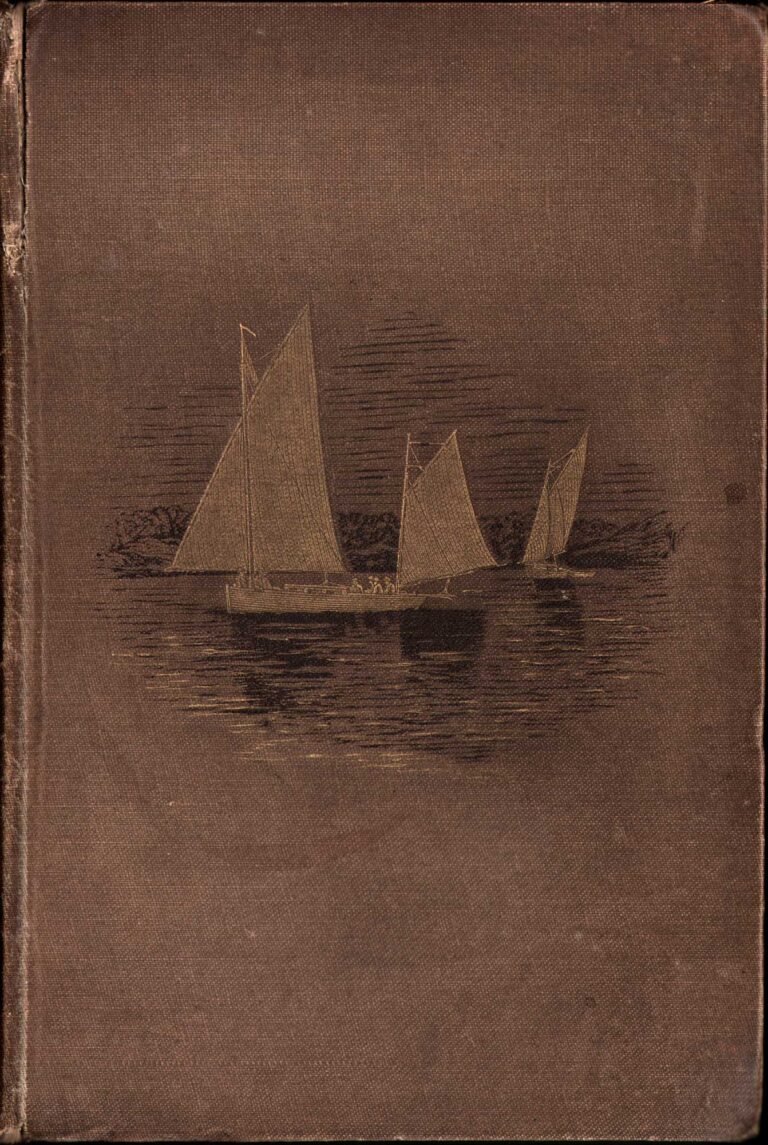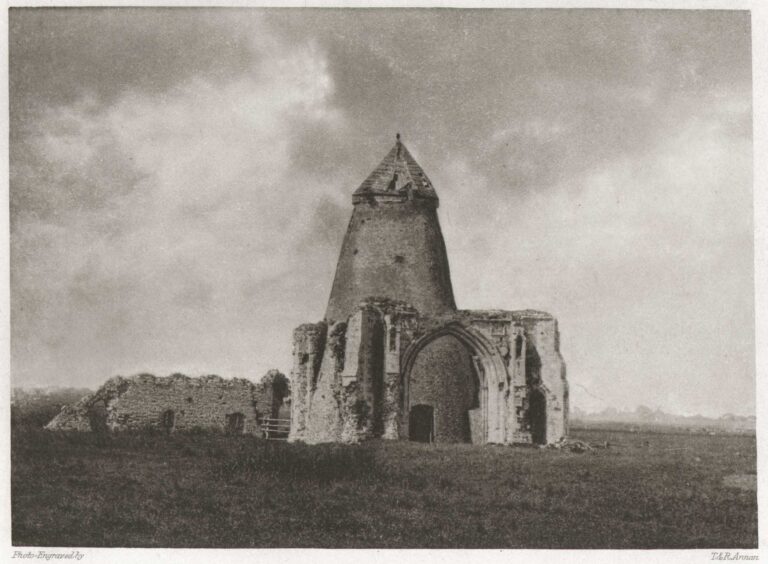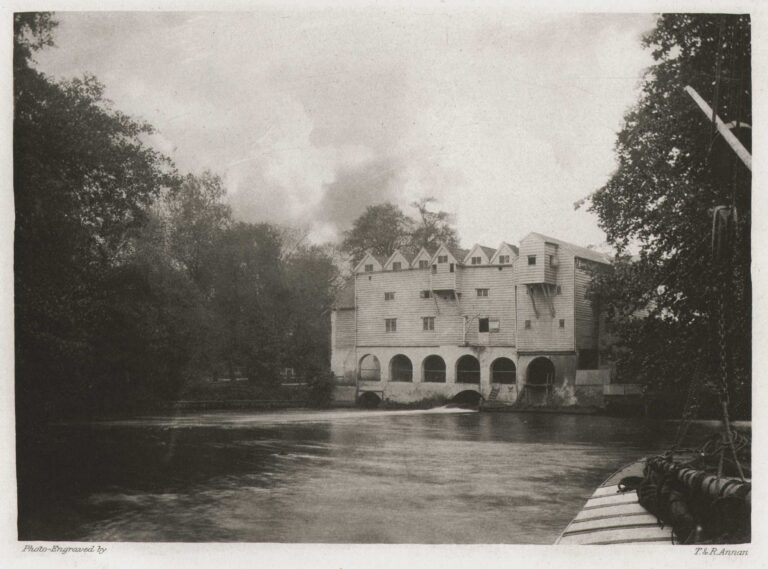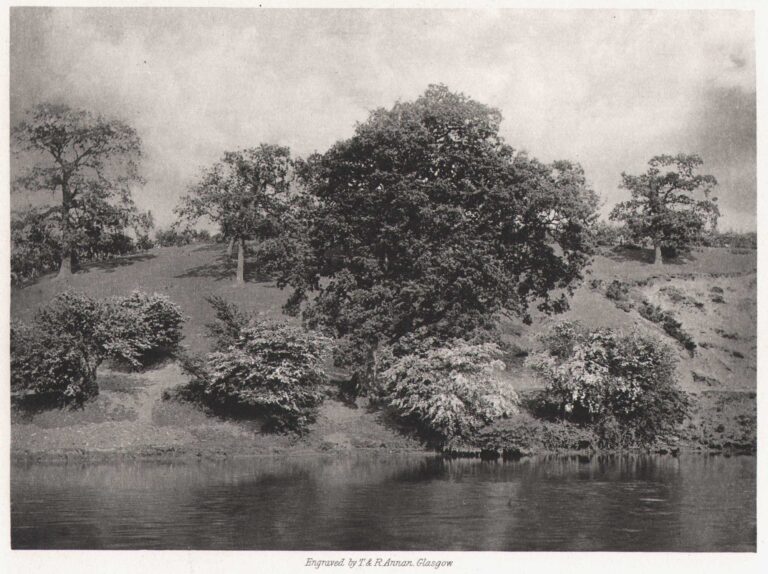
Pull’s Ferry, Norwich
“After squeezing through the city, the river emerges on the east, and skirts the low ground on which the cathedral is built, and the ruin of the Watergate, known as Pull’s Ferry, which has been painted and photographed thousands of times; and here we will ask the reader to accompany us on board a small steam-launch for an evening’s run down the river.” ⎯ G. Christopher Davies, 1883 (1.)
The soaring spire of Norwich Cathedral is seen in the distance at right in this view taken by an unknown photographer around 1882 or before. Notice the movement of the tree branches at center due to the long exposure of the original negative.
The following history of Pull’s Ferry, Norwich is courtesy Heritage Open Days online resource:
“In the medieval period transportation was a persistent problem, especially transportation of heavy building materials. Roads were poor so wherever possible building materials were transported by boat. Before work began on the cathedral in the 12th century a narrow chance, or canal, was dug from the River Wensum to the building site.
Heavy stone, much of it from France, was brought up the canal to the site. In addition to stone from Caen, timber from the Baltic came up the canal, along with iron from Sweden. It was not only building materials that came through the watergate; peat from the great East Anglian fens was brought here to be used as fuel in the priory kitchens.
In the 15th century an arched gateway was built across the canal, and it is this gateway that is the most obvious historical feature of Pull’s Ferry today. The gateway served to guard the approach to the cathedral, but it was not until the priory was dissolved by Henry VIII in the 16th century that the current Ferry House was built, incorporating the earlier gateway. The house was used as an inn, but also as a home for a ferryman carrying people across the Wensum.
JOHN PULL
The first ferryman was named Thomas Howes, or Holmes. The name ‘Pull’s’ recalls John Pull, who became ferryman in 1796. The ferry operated until 1943.
In 1947 the buildings and watergate were saved by a bequest from Camilla Doyle and money raised by Norwich Girl Guides.”
George Christopher Davies: 1849-1922
Davies was “a prolific photographer and writer who played an important role in encouraging popular awareness of the Norfolk Broads.” (1.) The following biography of the artist courtesy: Norfolk Through a Lens: A guide to the Photographic Collections held by Norfolk Library & Information Service –
Born in Shropshire, Davies practised as a solicitor for a time; he first came to Norfolk in 1871 to serve part of his articles. He was later to become Chief Clerk at Norfolk County Council in 1906, also serving as Clerk of the Peace. In his private life he was a nature lover, sportsman and photographer. His skills as a writer did much to popularise the Norfolk Broads as a rural idyll and holiday destination. When he was 27 he wrote ‘The Swan and her Crew’ an adventure story for boys set in the Norfolk Broads which created a great interest and enthusiasm for the area. His major work ‘Handbook to the Rivers and Broads of Norfolk and Suffolk’ was published in 55 editions and contained 12 of his own photographs. Davies also produced other books about the Broads, sailing, Belgian waterways, natural history, fishing, adventure books for children and even some on government administration. Towards the end of his life he acquired Burnt Fen Broad and spent many hours there during his retirement.
- George Christopher Davies: Wikipedia accessed September, 2025



